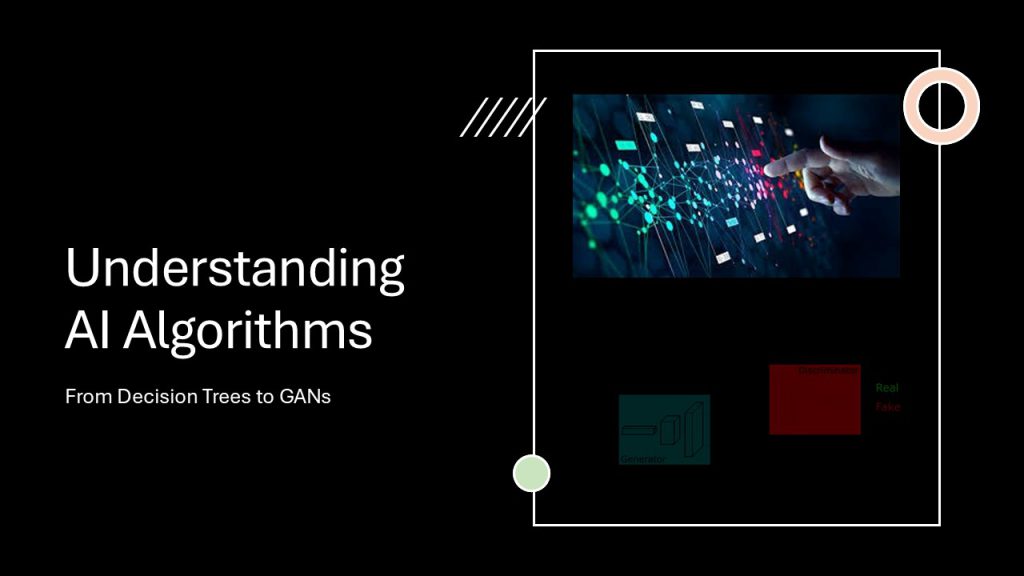Artificial Intelligence (AI) has revolutionized the way we approach problem-solving across various industries. At the core of AI lies a collection of algorithms that enable machines to learn from data and make decisions. This article delves into the world of AI algorithms, focusing on the fundamental concepts of Decision Trees, Neural Networks, and Generative Adversarial Networks (GANs). We will explore how these algorithms work, their applications, and their significance in the evolving landscape of technology.
What are AI Algorithms?
AI algorithms are sets of rules or instructions that guide machines in processing data and learning from it. They allow computers to perform tasks that would typically require human intelligence, such as recognizing speech, making predictions, or generating content. The choice of algorithm depends on the nature of the problem being solved and the type of data available.
Decision Trees
Decision Trees are one of the simplest yet powerful algorithms used in AI. They represent decisions and their possible consequences as a tree-like structure, making them easy to understand and interpret.
How Decision Trees Work
In a Decision Tree, each internal node represents a feature (or attribute), each branch represents a decision rule, and each leaf node represents an outcome. The tree is constructed by splitting the data into subsets based on the value of the features. The goal is to create branches that lead to the most accurate predictions.
Applications of Decision Trees
- Customer segmentation in marketing
- Credit scoring in finance
- Medical diagnosis
- Risk assessment
Advantages of Decision Trees
- Easy to understand and interpret
- Requires little data preprocessing
- Can handle both numerical and categorical data
Neural Networks
Neural Networks are inspired by the human brain’s architecture and are designed to recognize patterns. They consist of layers of interconnected nodes, or neurons, which process data in a hierarchical manner.
How Neural Networks Work
In a Neural Network, data passes through multiple layers, each applying a transformation to the input. The output from one layer serves as the input for the next. The network learns by adjusting the weights of the connections between neurons based on the error of the predictions compared to the actual outcomes.
Applications of Neural Networks
- Image and speech recognition
- Natural language processing
- Financial forecasting
- Game playing (e.g., AlphaGo)
Advantages of Neural Networks
- Can model complex relationships in data
- Highly flexible and scalable
- Suitable for large datasets
Generative Adversarial Networks (GANs)
Generative Adversarial Networks (GANs) are a class of AI algorithms used for generating new data samples that resemble a given dataset. They consist of two neural networks, a generator and a discriminator, that compete against each other.
How GANs Work
The generator creates new data samples, while the discriminator evaluates them against real data. The goal of the generator is to produce data that the discriminator cannot distinguish from real data, while the discriminator aims to accurately identify real versus generated samples. This adversarial process leads to the generation of highly realistic data.
Applications of GANs
- Image generation (e.g., deepfakes)
- Art creation
- Data augmentation for training AI models
- Super-resolution imaging
Advantages of GANs
- Ability to generate high-quality synthetic data
- Useful for unsupervised learning tasks
- Can improve the performance of other AI models
Conclusion
Understanding AI algorithms is crucial for harnessing the power of artificial intelligence in various applications. From the straightforward yet effective Decision Trees to the complex and innovative Generative Adversarial Networks, each algorithm serves distinct purposes and offers unique advantages. As technology continues to evolve, so will the methods we use to analyze data and make informed decisions. Embracing these algorithms will undoubtedly pave the way for advancements in AI and its practical applications across multiple fields.


